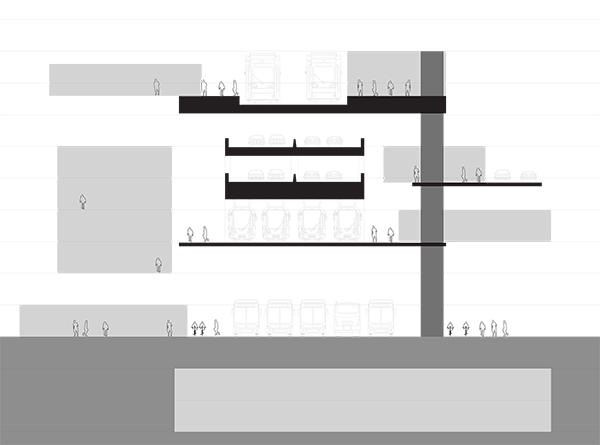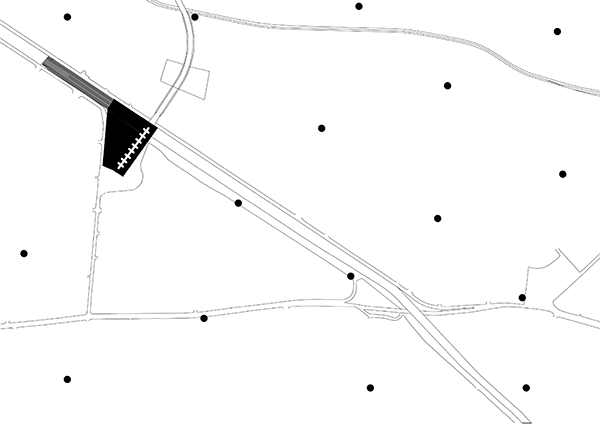








Instructors Alain Simon, Eve Deprez & Hugo Bauwens
Collaboration with Universidade Federal do Rio de Janeiro.
Participants Taís D'Angelis, Giovanna Freire, Fernanda Gomes, Luana Rivière, Alistair Vaicle & Inès Zimmerman
For this workshop, we developed the themes of infrastructure, mobility an urban density in Cascadura’s neighborhood. Our goal was to determine the nature of the needs of the inhabitants and to answer it with a global response that could be relevant for each scale of the city. Our main objective was to solve the traffic problem in this neighborhood and in Rio de Janeiro in general. Our project is thought to enable Rio’s inhabitants to go from one part of city to another in the most efficient way.
The workshop objective was to work on the infrastructure of Cascadura’s neighborhood. One of our first observations was that the neighborhood and the city in general were clogged by bus and car traffic and that an average Carioca spends 3 hours a day commuting. We wanted to develop an infrastructure that would unclog the city’s streets and reduce traffic. The idea was to concentrate all the heavy traffic – train, subways, highway,… - in a network of tubes to free the ground floor for pedestrians, cyclists and local traffic and to improve the network of public transportation to reduce the number of vehicles in the streets.
Our first idea to unclog the city from buses and cars was to work on different scales - the city, the district and the neighborhood. At the scale of the city we wanted to develop a new network of subways and urban trains that would be formed by a high speed loop around the city and subway lines crossing it. The stops would be every 5km or so and are the link between the city scale and the neighborhood scale. They are the center of the neighborhood and the starting point of the local buses. By using an extended network of subways and buses instead of a small subway system and buses that crossed the whole city we found a way to unclog the city’s streets by using a more effective public transportation network. By working on a much more local radius and with scattered stops, the buses don’t cause any serious traffic problems anymore.
The stops would not only be intermodal nodes between trains, subways, cars, buses and pedestrian but also the new center of each district with all the services needed by the inhabitants - administration, education, sport, health, leisure and work. They would take the form of towers and would be functioning according to a layer system so that the different flux don’t mix up.